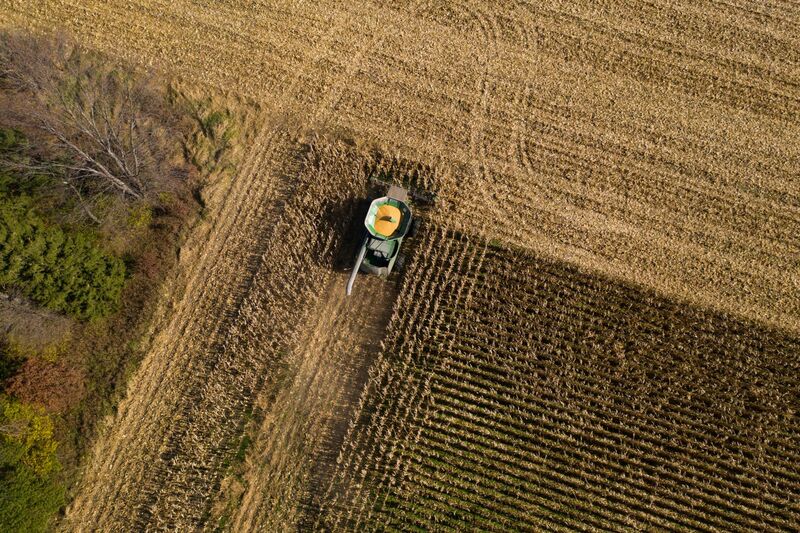
On Friday, May 12, the USDA released its May WASDE report. The full text of the monthly message is available via this link. Nearby corn, wheat, and soybean prices reached multi-year, or in CBOT wheat’s case, an all-time high in 2022. Corn and beans rose to pennies below the drought-ridden 2012 all-time peaks. Grain and oilseed futures rallied as war broke out in Europe’s breadbasket. Ukraine and Russia are leading wheat and corn producers and exporters, and the Black Sea ports are a critical logistical hub for shipping grains worldwide. While the war continues to rage, grain and oilseed prices have been trending lower. However, they remain at elevated levels compared to before the war’s start.
The Teucrium corn (CORN), soybean (SOYB), and wheat (WEAT) ETF products track the price of a portfolio of CBOT grain and oilseed futures.
Sal Gilberte’s take on the May WASDE report
I reached out to Sal Gilberte, the founder of the Teucrium family of agricultural ETFs, for his take on the latest USDA report. Sal told me:
The May WASDE report is always interesting because it gives us a first look at next year’s crop estimates. The standout from this particular report has to be global wheat markets, where record global production is forecast to be once again outpaced by even higher global demand. Global wheat stocks-to-use levels are projected at the lowest levels in nine years. The world continues to use more wheat than it produces, largely due to wartime related decreases in Ukraine plantings and production. But global wheat supplies, while shrinking, are still more than adequate. Global rice crops face the same dilemma, with usage outpacing demand and global inventories falling to a six year low. Again, rice supplies are more than adequate, but they are shrinking slightly nonetheless. Global corn and soybean production will, with good weather and the realization of trend line assumptions, rebound sharply from last year’s drought limiting production in Argentina. Overall, the grain complex should be dominated by large increases in corn and soybean production which could cause prices to continue their downward price reversion toward the cost of production, if global weather holds and the Black Sea grain corridors remain open. Barring any unexpected events, grain markets should be relatively mundane for the next few months as Northern Hemisphere planting is completed, and the markets absorb South American harvests.
Sal is looking for bumper 2023 northern hemisphere crops, but he would agree that in May, Mother Nature’s fickle past makes that a leap of faith.
Soybeans in post-WASDE trading
The USDA’s outlook for the 2023 U.S. soybean crop is for rising supplies, crush activities, and increased ending stocks. The May WASDE forecasted higher global ending stocks.

Nearby July CBOT soybean futures have been trending lower, with the price at the $13.6650 per bushel level on May 16.

Meanwhile, new-crop November CBOT bean futures were below the teens at below the $12.10 level, falling below support at the July 22, 2022, $12.1550 per bushel low.
Corn reacts to the latest report
The USDA told the corn futures market it expects increased U.S. and global production and higher ending stocks.

July CBOT corn futures were below $6 per bushel on May 15, at just over the $5.80 level, and trending lower.

The December new-crop corn futures chart highlights the bearish trend that has pushed the price to $5.00 per bushel.
Corn and beans are in bearish trends, but the weather over the growing season will determine if the market’s sentiment is too optimistic about the 2023 crop.
Wheat futures are most sensitive to the ongoing war
As Sal Gilberte mentioned, the worldwide wheat stock-to-use ratio is at the lowest level in nine years. The USDA calls for reduced U.S. supplies, exports, increased domestic demand, and lower stocks than the previous year. Global stocks continue to decline, keeping upward pressure on prices.

The chart highlights the bearish trend in the CBOT soft red winter wheat futures market, pushing the price from the 2022 record high to the $6.445 per bushel level on May 16.

New-crop September CBOT wheat futures were slightly higher at the $6.57 per bushel level, reflecting declining U.S. and global supplies. The wheat market fundamentals remain tight because of the ongoing war in Europe’s breadbasket.
Meanwhile, the KCBT hard red winter versus CBOT soft red winter wheat spreads in July and September was at a $2.4550 and $2.2125 premium for the KCBT wheat on May 16. The spread levels are far above the long-term norms as wheat consumers remain worried about supplies and potential upside price spikes.
The prospects for the commodities that feed and fuel the world
The weather during the 2023 growing season remains the most significant factor that determining the path of least resistance of soybean, corn, and wheat prices over the coming weeks and months. Prices have already declined, and while in bearish trends, they have fallen to levels that offer value. The war, inflation, increasing population, and rising biofuel demand could potentially cause sudden price spikes. I favor long positions in soybean, corn, and particularly wheat futures markets at the current price levels. The KCBT-CBOT spread is a compelling reason for higher prices.
May WASDE did not propel prices higher as the USDA looks at the 2023 crop year with rose-colored glasses.
I am a buyer of grain and oilseed futures at the current levels but will use tight stops and reestablish longs at lower levels if stopped out of risk positions. I am willing to take small losses in the quest for significant long-side profits.
On the date of publication, Andrew Hecht did not have (either directly or indirectly) positions in any of the securities mentioned in this article. All information and data in this article is solely for informational purposes. For more information please view the Barchart Disclosure Policy here.






